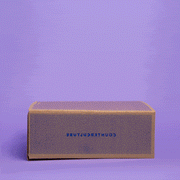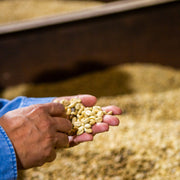Everybody loves a good pour-over, but when you roll out of bed in the morning sometimes you just want to let a machine do the hard work for you.
A good auto-drip is going to provide a consistency that’s tough to match and won't walk away mid-brew to let the dog out and forget to come back. How can you get the best results with your home coffee maker? What should you look for when buying an auto-drip? What are the best practices for using a coffee maker? We're got the answers to all of your questions.
Temperature Control

Auto-drip machines have a bad reputation for transforming excellent beans into subpar coffee. The reasons are many. First and foremost, auto-drip machines historically haven’t had good temperature control. They just don’t get the water hot enough. Coffee makers are often designed to have water start dispensing over the coffee at around 185˚F, which isn’t hot enough to achieve satisfying results. Hitting a temperature of 195–205˚F is crucial for brewing quality coffee, and lucky for us, there are a lot of machines out there that can do it!
To avoid this common issue, we recommend looking for a brewer that has been SCA certified. The SCA, or Specialty Coffee Association, has a checklist of attributes that they look for in an auto-drip machine, and temperature stability between 195–205˚F tops their list.
Fresh Ground Coffee

Second, using pre-ground coffee with a home brewer is convenient, but has a huge impact on coffee quality. We recommend grinding right before brewing. And using an adjustable burr grinder yields more uniform results. For most auto-drip machines, you should select a medium-coarse grind—something that looks like coarse sea salt. On a scale of one to 10, you should grind to a six, then adjust to taste.
Accurate Measurements

Finally, inaccurate and inconsistent recipes can prompt poor results. You need to be careful to measure your ingredients accurately. Small changes in the coffee-to-water ratio can have a major impact. The recipes provided with many machines often attempt to simplify things by using inexact measurements like cups and scoops. Following those instructions leads to inconsistent and often not-so-delicious results. If you are still measuring coffee with scoops, we highly recommend switching to a gram scale to weigh both your coffee and water. Doing so will immediately improve your coffee taste and consistency, no matter what brewer you are using.
So if you’re going to start using a scale to measure your ingredients, our recommendation is 20 grams of coffee and 320 grams of water per cup desired.

Our Go-To Recipe
Here’s a reliable recipe to make great coffee with a coffee maker:
- Gather your supplies: Coffee filters, coffee, cold-filtered water
- Weigh out coffee per cup desired (60 grams of coffee for 3 cups)
- Weigh out cold-filtered water per cup desired (960 grams of water for 3 cups)
- Grind coffee medium-coarse, about the size of kosher salt
- Place filter in the brew basket, and coffee in the filter and begin brewing
- Wait for the brew cycle to finish completely and enjoy!
This recipe, combined with an SCA-certified brewer and a burr grinder, should give you the very best results possible. Even if you’re not ready to purchase a new brewer or grinder, following any of the other suggestions will immediately improve your home coffee game.
But don’t take our word for it—give it a try at home! And let us know what you think.
Pro Tips

Cleaning Your Coffee Maker
You should ideally clean their coffee maker once a month. But let’s be honest with ourselves: If you aren’t the kind of person who replaces the water filter in your refrigerator regularly, you’re probably not going to grab your distilled white vinegar and clean your coffee pot thoroughly once a month.
We recommend a commercial-grade cleaner on your coffee maker about once every 3-4 months, but a water-vinegar solution works well too. If you use use your coffee maker every day for survival, we recommend descaling every three months.
The filter basket and carafe should be washed daily, or as often as you use them. Preventing old coffee from drying out and building up inside your carafe will make a very notable difference on the quality of your brewed coffee.
Permanent Or Paper Filters
Are permanent filters better than paper filters for coffee makers? If you don’t mind a silty cup, mesh filters are technically a more environmentally sustainable option. But on the flip side, you can easily rob mesh filters of their sustainability points by using an excessive amount of water to keep them clean. We prefer paper filters because they absorb some of the coffee oil producing a cleaner, brighter cup. Plus, paper filters and coffee grounds make for great compost!
Step Away From The Hot Plate
Another problem is a result of another convenience feature: the hot plate. Many brewers are designed with a built-in hot plate to keep the coffee warm through the morning as you drink cup after cup. Unfortunately, that steady heat after brewing accelerates chemical reactions that make your coffee taste bitter. It’s better to either keep your coffee in a thermal carafe or just brew the amount you want to drink immediately.
No coffee maker? No problem! Find out which brewing method is best for you.






